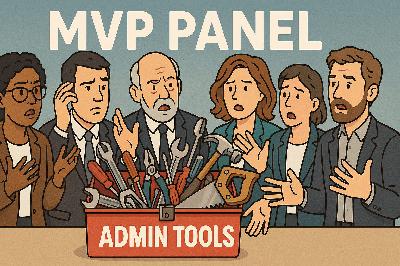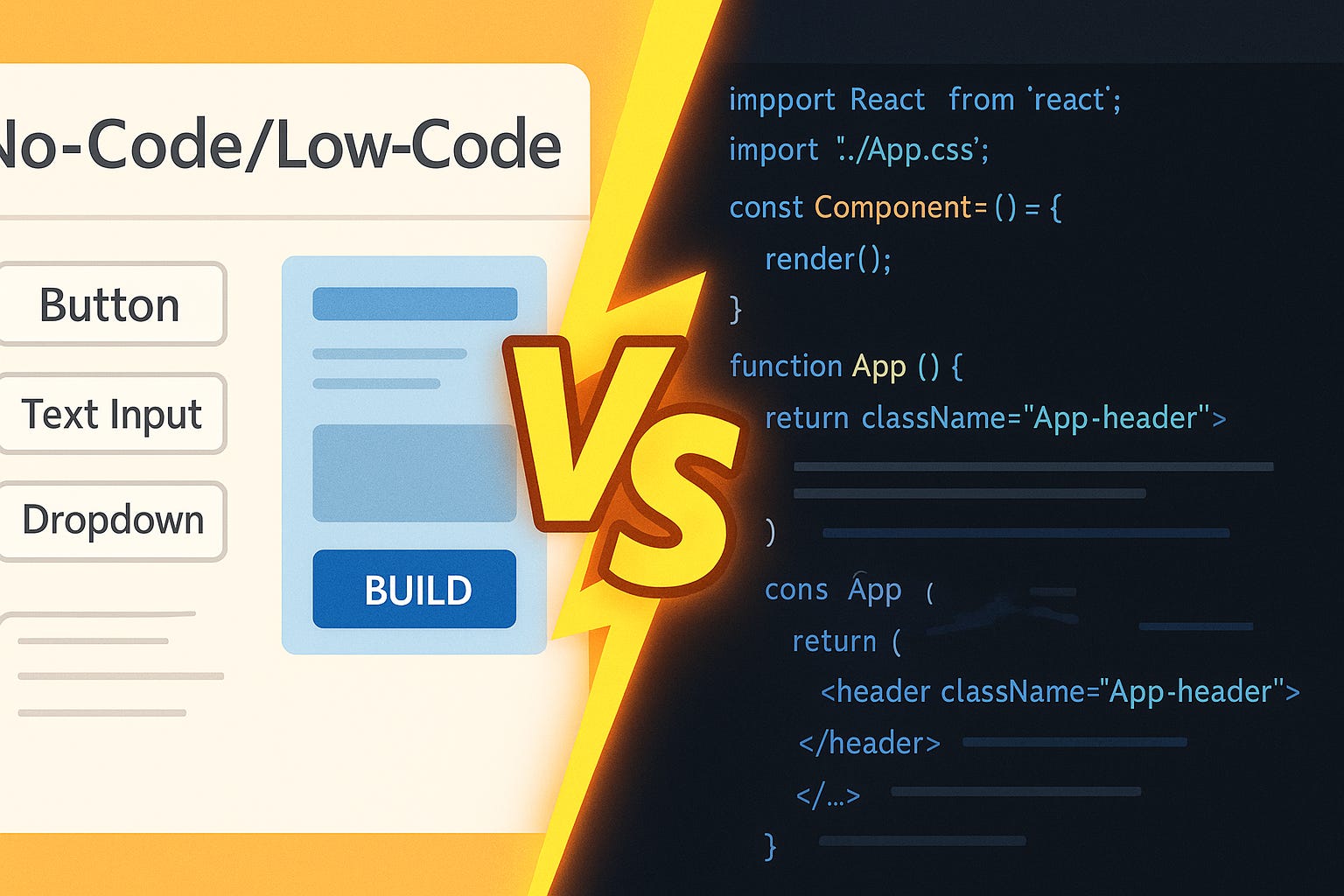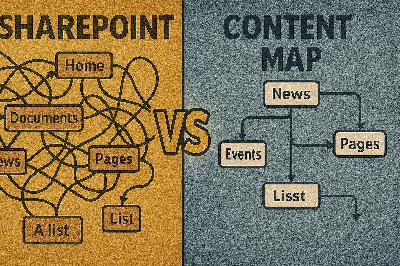You're Probably Using Teams Channels Wrong
Description
Let’s be real—Teams channels are just three kinds of roommates. Standard channels are the open-door living room. Private channels are the locked bedroom. Shared channels? That’s when your roommate’s cousin “stays for a few weeks” and suddenly your fridge looks like a crime scene.
Here’s the value: by the end, you’ll know exactly which channel to pick for marketing, dev, and external vendors—without accidentally leaking secrets. We’ll get into the actual mechanics later, not just the surface-level labels.
Quick pause—subscribe to the M365.Show newsletter at m365 dot show. Save yourself when the next Teams disaster hits. Because the real mess happens when you treat every channel the same—and that’s where we’re heading next.
Why Picking the Wrong Channel Wrecks Your Project
Ever watched a project slip because the wrong kind of Teams channel got used? Confidential files dropped in front of the wrong people, interns scrolling through data they should never see, followed by that embarrassing “please delete that file” email that nobody deletes. It happens because too many folks treat the three channel types like carbon copies. They’re not, and one bad choice can sink a project before it’s out of planning mode.
Quick story. A company handling a product launch threw marketing and dev into the same Standard channel. Marketing uploaded the glossy, client-ready files. Dev uploaded raw test builds and bug reports. End result: marketing interns who suddenly had access to unfinished code, and developers casually browsing embargoed press kits. Nobody meant to leak—Microsoft didn’t “glitch.” The leak happened because the structure guaranteed it.
Here’s what’s going on under the hood. A Standard channel is tied to the parent Team. In practice, that means the files there behave like shared storage across the entire Team membership. No prompts, no “are you sure” moments—everyone in the Team sees it. That broad inheritance is great for open collaboration but dangerous if you only want part of the group to see certain content. (Editor note: verify against Microsoft Docs—if confirmed, simplify to plain English and cite. If not confirmed, reframe as observed admin behavior.)
Think of that open spread as leaving your garage wide open. Nothing feels wrong until the neighbors start “borrowing” tools that were supposed to stay with you. Teams works the same way: what goes in a Standard channel gets shared broadly, like it or not. That’s why accidental data leaks feel less like bad luck and more like math.
And here’s the real pain: once the wrong files land in the wrong channel, you’re stuck with cleanup. That means governance questions, compliance headaches, and scrambling to rebuild trust with the business. Worse—auditors love catching mistakes that could have been avoided if the right channel was set from the start. Choosing incorrectly doesn’t just create an access problem; it sets the wrong perimeter for every permission, audit log, and policy downstream.
The takeaway? The channel type is not just a UI label. It’s your project’s security gate. Pick Standard and expect everyone in the Team to have visibility. Pick Private to pull a smaller group aside. Pick Shared if you’re bringing in external partners and don’t want to hand them the whole house key. You make the call once, and you deal with the consequences for the entire lifecycle.
Here’s your quick fix if you’re running projects: decide the channel type during kickoff. Don’t leave it to “we’ll just create one later.” Lock down who can even create channels, so you don’t wake up six months in with a sprawl of random standards leaking files everywhere. That single governance move saves you from a lot of firefighting.
So yes—wrong channel equals wrong audience, and wrong audience equals risk. Pretty UI aside, that’s how Teams behaves. Which raises the next big question: what actually separates these three flavors of channels, beyond the fluffy “collaboration space” jargon you keep hearing? That’s where we’re heading.
Standard, Private, and Shared: Cutting the Marketing Fluff
Microsoft’s marketing team loves to slap the phrase “collaboration space” on every channel type. Technically true, but about as helpful as calling your garage, your bedroom, and your driveway “living areas.” Sure, you can all meet in any of them, but eventually you’re wondering why your neighbor is folding laundry on your lawn. The reality is, Standard, Private, and Shared channels behave very differently. Treating them as identical is how files leak, audits fail, and admins lose sleep.
So let’s cut the fluff. Think of channels less as “spaces” and more as three different security models wearing the same UI. They all show you a chat window, a files tab, and some app tabs. But underneath, the way data is stored and who sees it changes. Get those differences wrong, and you’re not running a project—you’re running damage control.
Here’s the clean breakdown.
Standard channels:
What it is: the default channel type inside any Team.
Where files live: inside the parent Team’s SharePoint site (verify against Microsoft Docs). It adds a folder, not a brand-new collection.
Who sees it: everyone who’s a member of the parent Team, no exceptions.
When to use it: broad conversations, project chatter, updates you’re fine with all members seeing. Think of it as the living room. Collaborative and open, but not where you’ll leave your passport.
Private channels:
What it is: a channel locked to a smaller group of people already in the parent Team.
Where files live: many tenants show that a Private channel creates a separate SharePoint site (verify exact behavior in your tenant before stating as fact).
Who sees it: only the subset you explicitly add. Everyone else in the Team doesn’t even see it exist.
When to use it: content meant for an inner circle—finance numbers, HR plans, leadership discussions. Private channels are the locked bedroom. You pick who has the key, and nobody else wanders in by accident.
Shared channels:
What it is: a channel you can share across Teams—or even across organizations—without granting access to the entire parent Team.
Where files live: most documentation confirms Shared channels create a distinct storage space (verify exact mechanism in Microsoft Docs and tenant behavior).
Who sees it: both internal members you select and external participants you invite. The catch is they see only that channel, not the Team around it.
When to use it: vendor engagement, client collaboration, or anywhere you want external voices inside one conversation but without giving them the house key. Shared channels are the Airbnb suite. Guests can use the room, but they don’t wander through your closets.
That’s the part marketing glide right over. These aren’t three shades of the same tool—they’re three very different guardrail models. Standard opens everything to all Team members. Private carves off its own smaller room. Shared creates a bridge to outside people without flooding your directory with guests.
Notice the pattern: what it is, where the files land, who sees it, when to use it. Once you force yourself to check those four boxes, the decision gets a lot simpler. You’re no longer guessing at vague phrases like “collaboration space”—you’re matching the right container to the right problem.
Of course, description is one thing. Picking the right channel in real-world projects is where the headaches start. Use Standard too often and interns skim company financials. Lean too hard on Private and you build silos where nobody sees the full picture. Go all-in on Shared and you risk governance drift if nobody tracks who’s invited.
Okay—now for the selection rules and real-world scenarios.
Picking the Right Channel Without Getting Burned
Picking the right channel without getting burned starts with one truth: stop clicking “new channel” like you’re ordering from a vending machine. Teams isn’t chips and soda. The default choice isn’t always the right choice, and one sloppy click can end with the intern casually browsing financial forecasts or the vendor stumbling into your board deck. Channel selection is governance, not guesswork.
So here’s the channel rulebook boiled down to three sentences. Standard = broad transparency. Use it when the whole Team needs eyes on the same content. Example: a cross-department kickoff where marketing, sales, and HR all need to see the high-level plan.
Private = inner-circle with limited access. Only the people you select get in. Use it for things like feature design or financials—content that would only confuse or risk exposure if the wider Team saw it. Example: developers hashing out raw build notes their VP doesn’t need popping up over morning coffee.
Shared = external collaboration without Team-wide membership. It creates a doorway for vendors or clients to step into the conversation without turning them loose across your entire tenant. Example: a contractor who only needs one project space but doesn’t need to rummage around in your org chart.
That’s your quick decision grid. No coin flips, no overthinking. Standard when you want sunlight. Private when you need walls. Shared when you’ve got additional guests. Done.
Now here’s the part too many orgs skip: building a process so this choice happens the same way every time. Don’t leave it up to random project leads. That’s how you end up with a “Cold War bunker” of Private channels nobody remembers creating or a sprawl of orphaned Shared links floating around with God-knows-who invited in.
The fix is a playbook. Four steps. First, scope the audience—ask “who must actually see this?” Don’t write a novel, just list the real participant





















